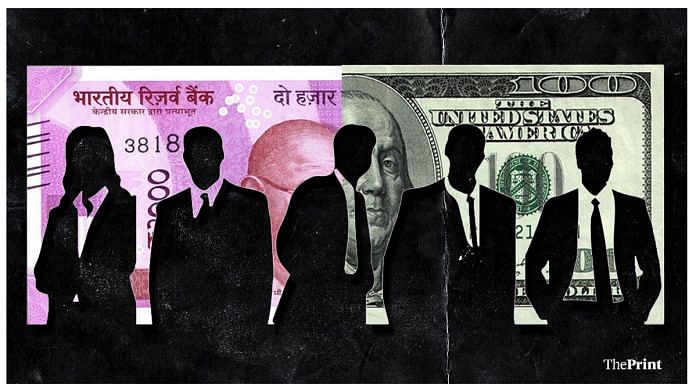In an age of growing billionaire wealth and ever-larger numbers of dollar-millionaires, an inevitable question is how reliable are the numbers put out annually by data gatherers like Credit Suisse, the Hurun Rich List, and Forbes with regard to the count of the wealthy people, and the extent of their wealth. In her remarkable book, Putin’s People, Catherine Belton says that seven or eight oligarchs at one stage controlled about half of Russia’s gross domestic product (GDP). Such dominance by a narrow circle around the country’s ruler is rare. In India, though, the growing talk is of the two ‘A’s as they have come to be called. Their wealth — currently estimated at $90 billion each — is multiples of what any Russian oligarch ever had. Mikhail Khodorkovsky, before he was jailed, was worth just $15 billion, and the wealthiest Russian today is said to be worth $30 billion.
Yet, no one would claim for the two ‘A’s the kind of control and dominance that Russia’s oligarchs once had — virtually determining who would rule their country. India as a whole is said to have 140 dollar-billionaires (a slightly larger number than Russia’s). According to Credit Suisse, there were 764,000 dollar-millionaires in India in 2019, i.e. those with wealth of ~7.5 crore and more. That was about two and a half times the figure for Russia, but then India is now much the larger economy with a longer history of private enterprise. In a country listing of the wealthiest people, India ranked 14th — not unreasonable for the world’s sixth-largest economy. But since the country has no tax on wealth or inheritance, there are no official data to seek confirmation.
What the country does have is data on income. And in the same 2019, all of 3,16,000 people filed tax returns declaring income of over $70,000 (or ~50 lakh). The mismatch between the wealth and income numbers is obvious. It is possible that large-scale income tax evasion is still taking place, or significant under-reporting. Also, the tax rules on capital gains allow for set-offs against inflation, and hence the reported income for tax purposes may be only a part of the actual income earned.
Also read: 3 ways to look at Russia-Ukraine war — starting with ‘Bad’ Putin
The numbers might jell better if one treated physical and financial wealth separately, instead of clubbing them as Credit Suisse and Hurun do. In general, real estate accounts for about half the total wealth; at the lower rungs of the wealthy, it could be as much as 75 per cent. For a true measure of deployable wealth, one must take out the value of primary residences (which don’t generate income and have no immediate commercial value). Given the big share of real estate in total wealth, excluding primary residences would drastically reduce the number of millionaires and make it much less impressive.
How big is the real estate cake? Again, there is no central data point, but checks with companies in the business suggest annual purchases and bookings of fewer than 3,000 residential properties that are individually worth ~5 crore and more. Even if one were to lower somewhat the bar for unit value, the number of transactions would remain decidedly modest in relation to the reported numbers of millionaires. This too suggests that the dollar-millionaire tallies should be treated with caution.
Another check, also on the expenditure side, is through the sales of high-value automobiles. Sales for the top three German luxury-car makers peaked at 32,500 in 2017 and have fallen since. In 2021, they were just 22,500 — affected partly by Covid and then the shortage of chips. Allowing for that, and adding on the numbers for Jaguar-Land Rover and top-end Japanese models like the Lexus, the total is unlikely to cross 40,000. The mismatch with the reported number of dollar-millionaires is obvious.
There will of course be wealthy people outside these nets, and millionaires with modest lifestyles. For instance, a substantial percentage of the 4,800 people elected to Parliament and state legislatures seem to be dollar-millionaires, taking current asset values. But the Pete Seeger-style question does pose itself: Where have all the millionaires gone?
(By special arrangement with Business Standard)
Also read: More jobs can shock-proof the Indian economy. Unemployment allowance can be cushion for now



